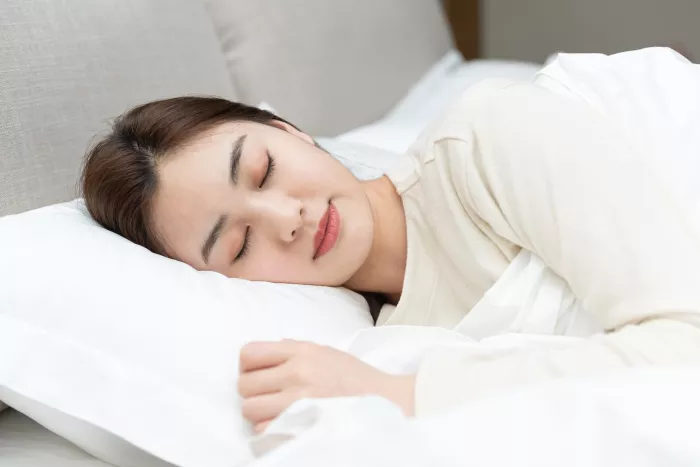Otoplasty, commonly known as ear pinning surgery, is a cosmetic procedure that reshapes the ears for a more balanced facial appearance. One of the most frequently asked questions among patients is about returning to normal sleep positions, particularly side sleeping. This comprehensive guide covers all aspects of sleeping after otoplasty, from immediate post-op care to long-term recovery.
Understanding Otoplasty and the Recovery Process
Otoplasty is a surgical procedure designed to:
- Reshape overly large or protruding ears
- Correct congenital ear deformities
- Repair damage from injuries
- Improve overall facial symmetry
The surgery typically takes 2-3 hours under local or general anesthesia, depending on the patient’s age and case complexity. During the procedure, the surgeon makes incisions behind the ears to access and reshape the cartilage, then secures the new position with permanent sutures.
The Healing Timeline: What to Expect
First 48 Hours:
- Significant swelling and discomfort
- Head bandage remains in place
- Limited mobility in the neck area
Days 3-7:
- Bandage is usually removed
- Swelling begins to subside
- Mild to moderate discomfort persists
Weeks 2-4:
- Most visible swelling resolves
- Incisions begin healing
- Gradual return to normal activities
Months 1-6:
- Final results become apparent
- Residual swelling completely disappears
- Ears settle into their permanent position
The Importance of Proper Sleeping Positions After Otoplasty
Sleeping position plays a crucial role in recovery for several reasons:
Protection of Surgical Site
The newly positioned cartilage needs time to stabilize. Pressure from side sleeping could disrupt the delicate healing process.
Minimizing Swelling
Elevating the head helps reduce fluid accumulation, which can speed up recovery.
Comfort Considerations
The ears remain tender for weeks after surgery, making certain positions uncomfortable.
Preventing Complications
Improper positioning could lead to:
- Increased risk of infection
- Delayed wound healing
- Asymmetry in final results
Detailed Sleeping Guidelines Week by Week
Week 1: The Critical Healing Phase
Position: Strict back sleeping with 30-45 degree elevation
Support: Use a wedge pillow or stack 2-3 regular pillows
Protection: Wear surgical headband continuously
Tips:
- Place pillows along your sides to prevent rolling
- Consider recliner sleeping if back discomfort occurs
- Use satin pillowcases to reduce friction
Weeks 2-3: Transition Period
Position: Continue back sleeping, but elevation can be reduced
Support: Transition to a single thicker pillow
Protection: Headband still required, especially at night
Tips:
- If you must turn, do so carefully with head supported
- Begin gentle neck stretches to maintain mobility
- Consider a travel pillow for added stability
Weeks 4-6: Gradual Return to Normal
Position: May begin testing side sleeping for short periods
Support: Use a donut-shaped pillow to keep pressure off ears
Protection: Headband may still be recommended at night
Tips:
- Alternate sides to distribute any pressure evenly
- Listen to your body – discomfort means it’s too soon
- Place a soft towel over the pillow for extra cushioning
Special Considerations for Different Otoplasty Techniques
The type of otoplasty performed affects recovery timelines:
Traditional Otoplasty
- More extensive cartilage reshaping
- Typically requires longer recovery (6-8 weeks before side sleeping)
- Higher risk of displacement with early pressure
Suture-Only Otoplasty
- Less invasive approach
- May allow earlier side sleeping (4-5 weeks)
- Still requires caution to protect sutures
Earlobe Reduction
- Often heals faster than cartilage work
- Side sleeping possible sooner (3-4 weeks)
- Still needs protection from excessive pressure
Alternative Sleep Solutions During Recovery
For those struggling with back sleeping:
Recliner Chairs
- Provide automatic elevation
- Limit movement during sleep
Pregnancy Pillows
- Full-body support
- Prevents accidental rolling
Adjustable Beds
- Customizable elevation
- Often covered by insurance for post-surgical use
Potential Complications from Early Side Sleeping
Ignoring sleeping precautions can lead to:
Hematoma Formation
- Blood accumulation under skin
- May require drainage procedure
Suture Complications
- Premature loosening of internal stitches
- Risk of ear springing back
Asymmetry Development
- Uneven pressure causing lopsided results
- May necessitate revision surgery
Prolonged Swelling
- Delays final results
- Increases discomfort duration
Long-Term Care After Full Recovery
Once cleared for all sleeping positions:
Continue Protecting Your Ears
- Be mindful of pressure during deep sleep
- Consider using softer pillows long-term
Sun Protection
- New scars are sun-sensitive for 12+ months
- Wear hats or use sunscreen on ears
Follow-Up Appointments
- Attend all scheduled check-ups
- Address any concerns promptly
Conclusion
Proper sleep positioning after otoplasty requires patience but pays dividends in your final results. While the 6-week recovery period may seem lengthy, protecting your investment in your appearance is worth the temporary inconvenience. Remember that every patient heals differently—follow your surgeon’s specific recommendations rather than comparing to others’ experiences.
By committing to proper aftercare, including mindful sleeping positions, you’ll achieve the best possible outcome from your otoplasty procedure. The temporary challenges of recovery will soon be forgotten when you enjoy your beautifully proportioned ears for years to come.
For personalized advice regarding your specific recovery timeline, always consult with your board-certified plastic surgeon. They can provide guidance tailored to your unique procedure, healing rate, and lifestyle factors.
Frequently Asked Questions
Can I use a regular pillow after 2 weeks?
While you may transition to a normal pillow, maintain elevation until cleared by your surgeon.
What if I accidentally roll onto my side during sleep?
Occasional brief pressure likely won’t cause damage, but try to correct position when noticed.
When can I sleep without the headband?
Most surgeons recommend 4-6 weeks of nighttime headband use.
Is it safe to sleep on just one side after 4 weeks?
Alternate sides to prevent uneven pressure on healing tissues.
Can I use sleep aids during recovery?
Only with surgeon approval, as some may cause excessive movement.
Related topics:
What Is The Best Age For Otoplasty?
Will Insurance Cover Otoplasty?
what facial surgery do I need: A Beginner’s Guide


